By Don McDougall
Glock vs 1911, will the best everyday carry handgun please stand up.


USA –-(Ammoland.com)- A local range/gun store asked me to put together training for their employees who carry at work. That’s pretty much everyone on the floor and the range offices.
There are plenty of handgun proficiency tests around, including a couple good ones here on Ammoland. So putting the basic together was not too hard.
The issues started when a few of the employees wanted to carry 1911’s. Some of the younger employees objected saying that 1911’s are not safe and that they’re obsolete; that only Glocks are safe.
They didn’t want to be around 1911’s that were locked and cocked.
Who knew there was a “Safe Space” for Glock owners.
Only a few of the employees under 30 owned a 1911, and some had zero intention of every buying one. The first real pistol most of us owned, is now not even in the discussion for new shooters. The “kids”, impression of the 1911 is an obsolete, heavy metal gun that has long been passed by. However, when given the option to wear one on their hip it was the “Bad Ass”, gun of choice.
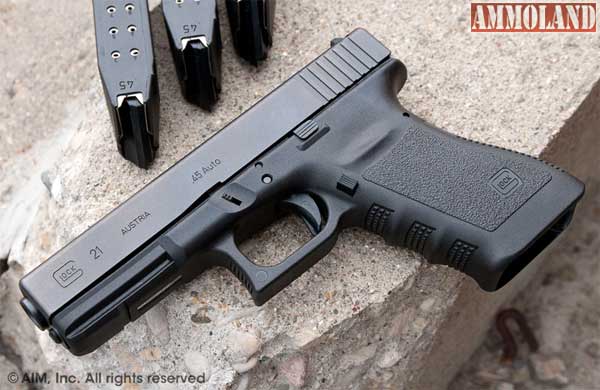
A Glock is about as good a gun as a mil-spec 1911. The reset for the striker on the Glocks mean that the gun wants a trigger in the 5lb range. For a 1911 my competition guns were right at the 2.2 lb limit. The 1911 triggers lack creep and pre-travel when done properly.
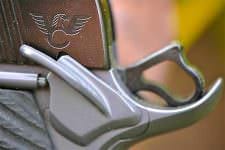
The Glocks reliability comes from their generous tolerances. (This is the same for the mil-spec 1911) The more play there is with a gun, the more likely it is to go “pew” every time.
There are myths about both guns. There’s no proof ever of a Glock surviving 300,000 round tests, and a .45 ACP will not just kill you it will kill your soul, the round is SO powerful. That too is a myth. (It just messes your soul up a bit.)
I find a 1911 to be a safer firearm, the external safety and the hammer being visible provides a lot of trusts to be in the gun and its condition. But that is just me.
The declining love of the 1911 is due to other factors:
- Cleaning – Shooters these days are lazy, and stripping and cleaning a 1911 is more work than a Glock.
- Sales – Younger sales reps sell what they know. That means they direct their 1st-time gun buyers to Glocks.
- 9mm Vs .45 – Let’s be blunt a 9mm is a lot like a .22. You can shoot them all day and it takes little to no effort. The .45 ACP can get tiring after 200 rounds. Plus 9mm ammo is cheap.
- Weight – The 1911 is heavy, and the .45 ACP round is heavy. Hauling the gun, mags, rig and 300 rounds to a match can be a challenge all by itself.
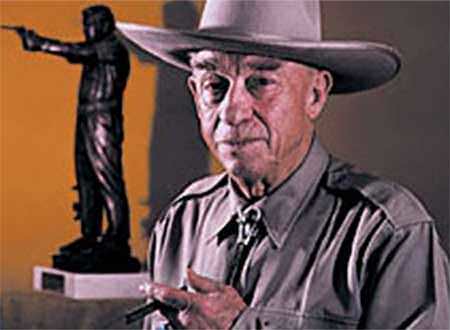
Lastly the single biggest issue is that Elmer Keith is dead. Precision shooting is left to NRA Bullseye shooters and the Olympics. Stop by after-hours at the range and you’ll find the employees on the line seeing who can empty a magazine the fastest in a target that is 10 feet away. Back in the day we would put the target out to 10 meters and see who could shoot the smallest group. It is not that the Glock is a better gun than a 1911. The difference is that the games shooters are playing have changed, and precision shooting is no longer a valued skill.
Most of the Glock Clones have tighter tolerances; they shoot flatter and tighter groups. They’re also just not as popular. They require a bit more care (cleaning) than the original. See the pattern yet?
Remember, both the 1911 and Glock started as battlefield weapons. The 1911 was designed to allow a US soldier to drop an adversary on the battlefield. The Glock was made to provide a handgun to an Austrian Army that is more of a show piece, as well as a reliable choice in community policing.
The Glock is a fine weapon for the purpose it was built, a reliable minor caliber gun for personal protection. The 1911’s long history of service speaks for itself. As a major caliber man stopper with accuracy, there is nothing better.
There will always be a market for the 1911, but its dominance as the American Pistol will continue to decline as long as dumping a mag into a target at 10 feet is seen as more desirable than hitting the X ring at 10 meters.
About Don McDougall:
Don McDougall is an NRA instructor and member of the Los Padres “Friends of the NRA” committee. If he’s not at the range you will find him setting the record straight with on gun issues and gun safety on AmmoLand Shooting Sports News.


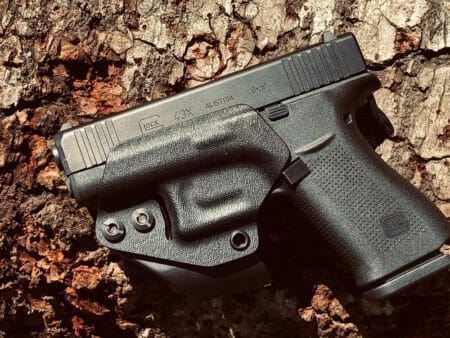
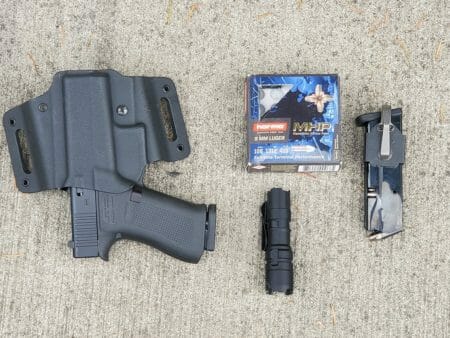


I’ll stick with my SIG P220 in 45ACP. Best of both worlds.
I love my Glocks and I love my 1911’s. I grew up shooting 1911’s and for a long time refused to shoot let alone carry a Glock or any other striker fired pistol. Lets be honest most of the grips feel like a 2×4 in the hand. That said with some work to the trigger and a good match grade barrel I can make my Glocks shoot as well as any of my 1911’s for a a fraction of the cost. Plus twice the magazine capacity. With the advances in bullet design for defensive ammo we are no getting very… Read more »
Had a Glock once, I sold it because after firing it I hated the way it felt in my hand and the grip angle. I love the 1911 and for me you can’t beat old Slab Sides no matter how fancy your technology is. People that carry Glocks have no depth of feeling for the finer points of using American technology (it may be old … but its venerable and trustworthy).
” Why a .45? Because shooting twice is just plain silly!”
I Just don’t like Glocks! ! I like 1911’s! But my gun for carry is My FNX-45! I simply hate striker fired weapons! As far as I’m concerned when people tell me ” But Glocks are cheap” My only answer is ” Yes they are” ! I refuse to attempt to save my life with a ” Cheap Gun “!
Glocks will never have the class of a 1911. The style. The grace. The shear beauty of a 1911.
The Glock is fine as a shooting appliance. But some of us want more.
1911’s have a poor reputation for reliability because of 1911’s under 4″ in barrel length. Don’t get one of those. 4″ or more.
The 1911 could use some updates. With the series 80 mods, the grip safety is no longer needed and adds complication and another mode for failure, the spur on the hammer probably doesnt need to be there either. I have owned both types of pistols and find them both to be seriously useful, both are well made and well thought out, neither is a one size fits all solution. Most important is that good training and frequent practice and dry firing are necessary for safe use. Like any tool whether a car or circular saw or heavy industrial machinery, no… Read more »